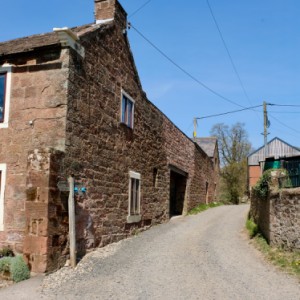A Fellside Walk
Over the next few days I am taking a walk. I am going in stages and everyone is welcome to come along (virtually of course). This is actually Stage 2. Stage 1 happened yesterday, although I did not label it as such. Stage 1 was getting out of the door and into the driveway, where the tulips are. Getting out of the door is the most difficult part of taking a walk for me, as I would always prefer to stay at home doing things or sitting in the garden reading. So Stage 1 out of the door and onto the drive, past the tulips.
Stage 2
Through the gate, turn left and walk a very short way down the road, past the Chapel on the right. And this is where we get to. The road bends round to the left and leads to the centre of the village. But we are not going that way. We are at the entrance to a track that leads up the fellside.
From stepping out of the gate we have been on, and still are on, the Pennine Way, as the road going past our house is part of the Pennine Way linking two tracks. At this point, walkers following the Pennine Way take the track to the right between the buildings, the track we are going to take tomorrow (see first extra for a view of this track). The signpost (see second extra - the blue bags are attached because today is rubbish collection day and this is where the men put the new blue bags - the rest of us get them thrown into our gardens!) shows that the next stop is Garrigill 15 miles. It’s a long, hard section of the Pennine Way, which is why Dufton has a Youth Hostel, B&Bs and a campsite for walkers to take a break.
The walk I am taking you on has historical and geological elements to it, so it is perhaps as well that I will have with me someone who knows about the latter.
There is plenty of evidence for Dufton once being a mediaeval village. The building on the left is part of Dufton Hall and it is thought that it was built on the site of the old manor house. There is nothing left of the mediaeval buildings as most of the cottages were replaced by the London Lead Company, who used the village to house the families of lead miners. Many of the houses date from the 17th and 18th century. the one straight ahead has the date 1648 and is one of the oldest in the village. Most of the houses were built of the distinctive red sandstone (St Bees Sandstone) which was quarried locally in Dufton Ghyll. This is just one of several rock types we will come across on our walk.
(I have placed the point on the map if you want to know exactly where I was and how it relates to the Pennine Way.)



Comments
Sign in or get an account to comment.


